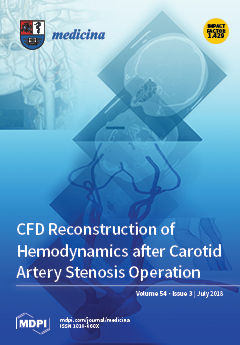Background and objective: For a high level athlete, it is essential to ensure optimal energy as well as macro- and micro-nutrient and fluid intakes, in order to improve their performance during training and competition. Protein intake should be 1.2–2.1 g/kg/d, whereas the requirements
[...] Read more.
Background and objective: For a high level athlete, it is essential to ensure optimal energy as well as macro- and micro-nutrient and fluid intakes, in order to improve their performance during training and competition. Protein intake should be 1.2–2.1 g/kg/d, whereas the requirements for carbohydrate and fat intakes should be >5g/kg/d and 20–35% of energy, respectively. The micronutrient and fluid intakes in athletes were compared to the Dietary Reference Intake (DRI) and European Food Safety Authority (EFSA) recommendations, respectively. This study aimed to characterize and compare the nutritional habits of athletes at the preparatory and competitive phase, and to test if their nutritional intakes were in accordance with the recommendations.
Materials and methods: A total of 276 professional athletes were assessed. To evaluate their nutritional intake, the athletes completed a 7 days food record. Under reporting was defined using a ratio of energy intake to basal metabolic rate (BMR) of 1.1. Body composition was assessed using dual energy X-ray absorptiometry (DXA).
Results: Almost half (49%) of the athletes from the final sample reported lower measured intakes of carbohydrates and 27% reported a higher consumption of proteins than what was recommended. In both the preparatory and competitive phases, the micronutrients with a higher mismatch between the actual and recommended intakes were vitamins D and E, magnesium, folate, calcium, and zinc for both sexes, and iron intake for females. A large proportion of athletes reported a lower water intake. Compared to the recommendations, males reported a higher intake of carbohydrates, lipids, vitamins E, calcium, and magnesium (
p <0.05) in the competitive phase, while females reported a lower ingestion of water, vitamins A and D, and calcium (
p <0.05) in the preparatory phase.
Conclusions: Overall, in the preparatory and competitive phases of the season, athletes reported a macro- and micro-nutrient intake below the recommendations, especially in the female athletic population. Dietary intakes in athletes need to be optimized and adjusted to their requirements, according to sex and sport, so as to avoid compromising health and performance.
Full article






